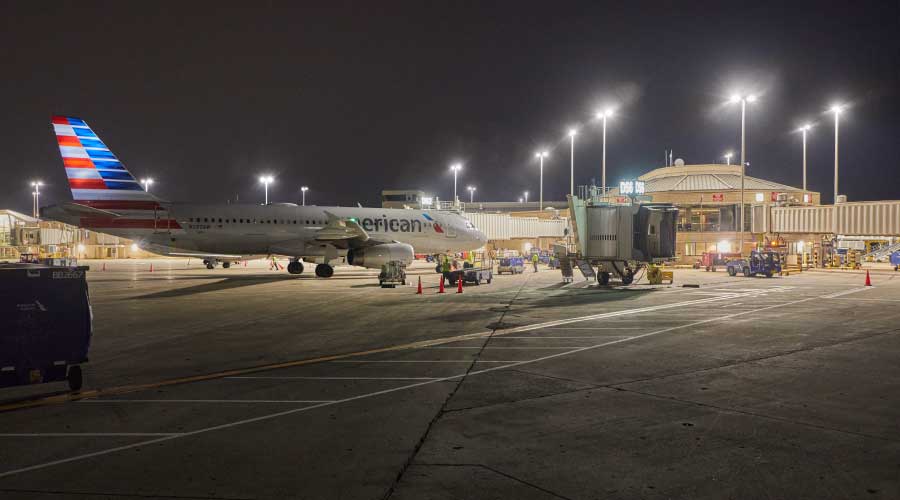Proper Disposal of Lamps and Ballasts
All fluorescent and most HID lamps contain mercury. Only incandescents and light emitting diodes (LEDs) do not. Even low-mercury lamps need to be either recycled or disposed of properly. Fortunately, the costs involved are a small fraction of the life cycle cost of the typical fixture.
"While better for the environment and one way to garner LEED points, when it comes to lamp disposal, professional lighting maintenance companies see low-mercury lamps the same as standard lamps," says Joe Potyak, Eastern Region operations manager for Lime Energy. "Only in a few states could such lamps be legally dumped in city landfills. For the small savings involved with doing so, we find most of our customers would rather not take the risk of a violation or an environmental black eye."
While the federal Environmental Protection Agency (EPA) administers federal rules on hazardous waste disposal (and nearly all lamps containing mercury fall into that category), state regulations have the final say on how such lamps must be handled. To find your state's fluorescent lamp disposal rules, the Association of Lamp and Mercury Recyclers, an industry organization, offers a state-by-state description at www.almr.org/statebystate.html. To find a licensed lamp recycler in your area, check out www.almr.org/map.html or your state environmental agency.
While prices vary, disposal costs for a 4-foot T12 or T8 lamp range between 35 and 70 cents. Due to the varying sizes of compact fluorescents, their disposal costs range between $.25 and $1.35 per lamp. Such pricing typically covers packaging the lamps in reusable cardboard boxes designed to avoid lamp breakage in transit, and includes the paper trail needed to prove certified disposal. Lifetime costs for disposing of the lamps in the sample fixture (if not using a group relamping service), would be about $9.
Ballast Disposal
When electronic ballasts became common as an energy efficiency retrofit option in the 1990s, an issue arose with regard to disposal of the many magnetic ballasts they were replacing. From the 1950s through 1979, nearly all magnetic ballasts contained polychlorinated biphenyls (PCBs), a substance later identified as a carcinogen. As a replacement for PCBs, some manufacturers began using diethylhexyl phthalate (DEHP) but, by 1985, it too was banned (though some larger units contained it until 1991). When it became illegal to dump magnetic ballasts with other trash, a new cottage industry — ballast disposal — appeared.
Because of the difficulty and risk involved with identifying and separating out such ballasts from those installed in the last 20 years (i.e., not containing toxic materials), some lighting maintenance firms still dispose of all magnetic ballasts as hazardous waste.
While two decades of rising electricity rates and utility rebates have eliminated many of them in Northeast, mid-Atlantic, and Western coastal states, they are still common in Southern and Midwest states, and where utility rebates were low or absent. "As time goes on," says Kielkucki, "most of the magnetics we find now are clearly marked 'No PCBs' so this is a fading problem. But every now and then, in seldom-used spaces missed during lighting upgrades, we still find relics of the '60s and '70s that need special attention."
Fortunately, unit costs for ballast disposal have dropped from a high of about $5 in the late '90s to a range of about $2 to $3 today for a standard two-lamp ballast; heavier units cost more. Once again, professional certified disposal is involved, with a full paper trail to ensure no problems down the road.
The sample fixture uses an electronic ballast, so there are no added costs for future ballast disposal. Costs over the fixture's 30-year lifetime total $1,370:
- $250 for the fixture and installation
- $1,000 for electricity
- $60 for relamping labor
- $51 for replacement lamps and one ballast
- $9 for lamp disposal
About 73 percent was energy, 18 percent was the original fixture and installation, almost 4.4 percent was labor, another 3.7 percent was parts, and about .7 percent was for lamp disposal.
Depending on the combination of cost-cutting options applied, careful choices of equipment specs, system design, and lighting services can help polish its bottom line by 5 percent to 15 percent.
Lindsay Audin is president of EnergyWiz, an energy consulting firm based in Croton, N.Y. He is a contributing editor for Building Operating Management.
Related Topics:














